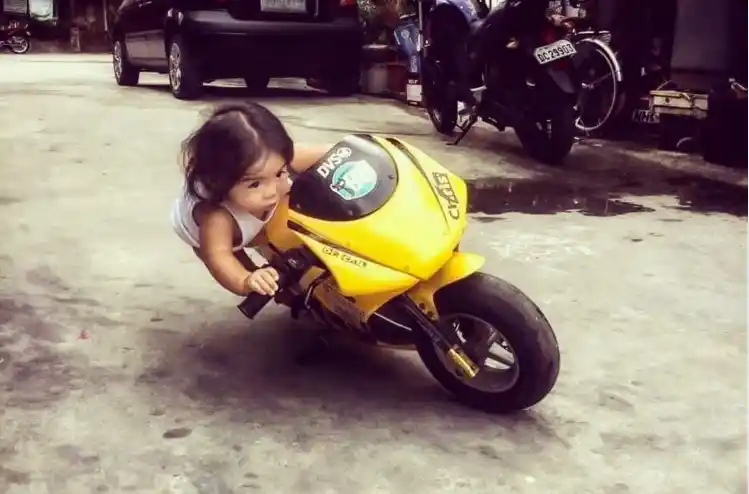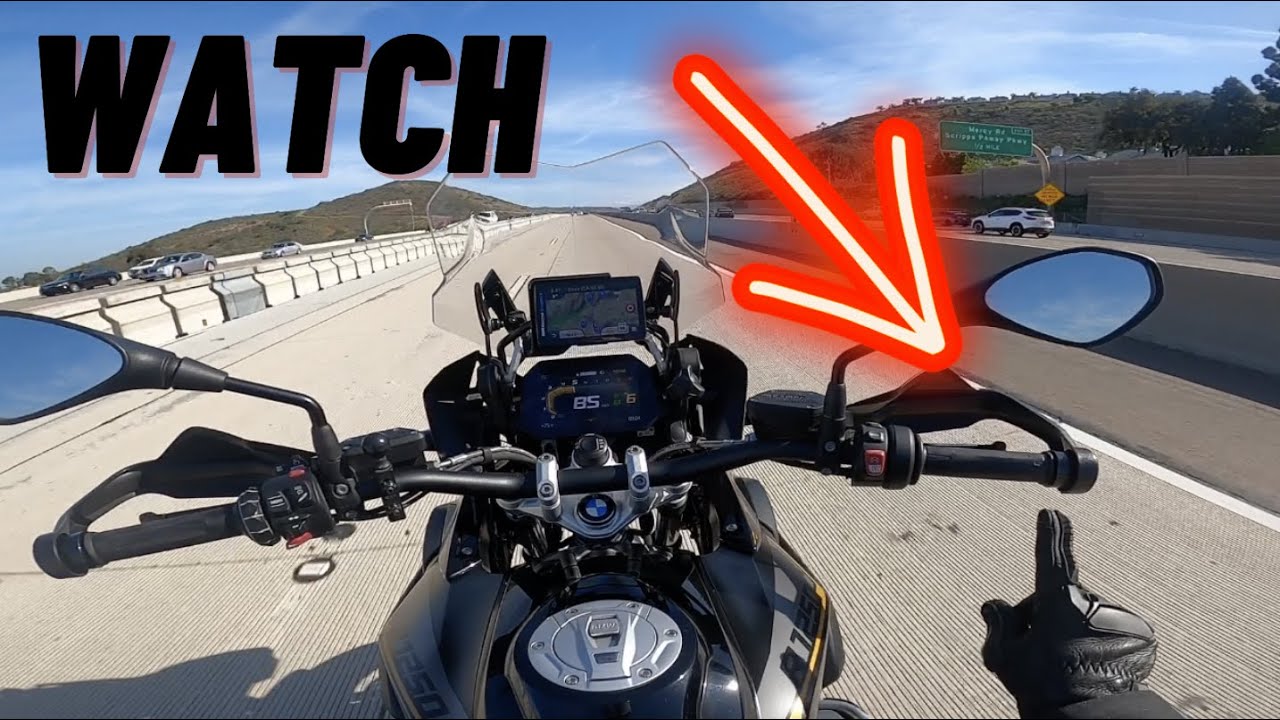Riding a motorcycle for the first time can be challenging since it requires a great level of coordination and balance. But once you master the different steering techniques like counter-steering and counterbalancing, it becomes easier.
But what is counter steering on a motorcycle exactly? It is a riding concept that allows you to initiate turns with greater control. This technique involves applying gentle pressure on the bike’s handlebar in the opposing direction of your intended turn. You can use it at lower and higher speeds.
But are there any benefits of counter steering on a motorcycle? You are about to find out this shortly and much more.
What Is Counter Steering On A Motorcycle?
Simply put, it is the technique of initiating a turn toward a given direction by pushing forward on the handlebar. You just need to apply slight pressure on the handlebar in the opposite direction of your desired turn.
For example, if you want to make a quick right turn, you steer the handlebars slightly to the left. This allows the bike to lean into a rightward position. And to turn left, you torque the handlebars to the right.
When you counter steer, your motorcycle’s front wheel typically out-tracks away from the corner. This helps create instability due to centrifugal forces, causing your bike to lean toward the direction you want to go. With that said, several factors can affect counter steering on your bike. These include:
1. Speed
Generally, counter steering on a motorcycle is most effective at speeds of around 12 mph or higher. As the speed increases, you will feel its effects and response more. However, you can still execute it at lower speeds.
2. Turn Radius
If the turn radius is smaller and the speed higher, more counter-steering will be required. This is because you have to lean more to achieve a steady and smooth turn.
3. Outside Forces
Environmental factors like wind and other vehicles on the road can also affect how you counter-steer. These forces greatly influence your bike’s stability. For example, if the wind is blowing from the left, you should lean to the left. This is to prevent it from blowing you over to the right.
4. Timing for Initiating the Turn
Counter-steering is timing dependent. It requires you to make a well-timed, quick turn. Simply, you need to know how quickly to apply pressure on the handlebars, as this will affect the bike’s response.
5. Rider’s Skill Level
More experienced riders know the amount of pressure to apply and at what time when counter-steering. However, as a newbie, it can be challenging to counter-steer as effectively, especially in an emergency. That is why it is recommended to undergo prior training.

How To Counter-Steer a Motorcycle Correctly
Now that you know what is counter steering on a motorcycle, how do you do it correctly? Here is a step-by-step guide to help you practice this technique:
Step 1: Position your Arms and Legs
Get on your motorcycle and put your arms parallel to the ground in a relaxed position. Then, hug the bike tightly with your knees to ensure you are sturdy.
Step 2: Prepare to Make the Turn
As you approach the turn, downshift if traveling at high speeds. If you are wondering how to downshift on a motorcycle, simply roll the throttle closed. Then, pull the clutch lever and choose your preferred gear.
Step 3: Make the Turn
After slowing down, push the bike’s handlebars on the right side if you want to turn in that direction. Next, apply pressure on the handgrip, gently increasing it.
Step 4: Complete the Turn
As you make the turn, maintain pressure on the handgrip and keep your head up, looking through the turn. Also, don’t let off the throttle or decelerate.
Step 5: Accelerate
When exiting the turn, gently release pressure on the inner handgrip and the throttle. Next, slightly push on the outer handlebar, and your motorcycle will stand upright.
Below is a video demonstration of how to counter-steer your bike:
Benefits of Counter Steering On a Motorcycle
If you are wondering whether counter steering is really necessary, check out its benefits below.
1. Quick Response to Emergencies
The primary benefit of learning how to counter-steer a motorcycle is the safety the technique offers. If executed correctly, it can mean the difference between life and death in an emergency situation.
2. Better Control
Counter steering allows for more precise control over your bike. It makes it easier to maneuver around tight corners or curves, ensuring a more enjoyable ride. You can effortlessly make complex turns at high speeds without losing control.
3. Time Saver for Racers
Motorcycle racing involves making rapid turns around a circular track. So, if you know how to counter-steer, you can quickly make turns in split-second timing and at high speeds. This can help increase your chances of winning.
4. Improved Off-Roading Capabilities
When riding on uneven surfaces, it can be challenging to maintain balance and speed. Counter steering allows for more balanced maneuvers as you navigate rough terrain.
Common Motorcycle Counter Steering Myths
Counter steering itself is not a myth. However, there are many misconceptions associated with this riding technique, including the following.
- There is a minimum speed where counter steering becomes ineffective. This is not true. You can counter steer at lower speeds, only that you will not feel the effect more.
- Counter steering only applies to specific bikes. In reality, you can use any motorcycle to counter-steer, regardless of its style or design. So, you don’t have to choose a bobber vs chopper.
- Counter steering only works for turns. It’s not true because the technique is also handy when correcting the bike’s balance in different riding scenarios. This includes when avoiding obstacles or making quick lane changes.
- The technique is only for experienced riders. On the contrary, counter-steering is a fundamental skill that all cyclists should learn for safe riding.
- Counter steering comes out naturally, so you don’t have to think about it. This is not entirely true because you must actively learn and practice the technique. But for experienced riders, it is almost instinctual.
Motorcycle Counter Steering vs. Normal Steering Differences
Counter steering generally involves initiating a lean angle on a motorcycle when you want to change directions. Of course, you must steer the handgrips in the opposite direction of your intended turn.
On the other hand, normal or traditional steering involves turning the handlebars toward the right when you want to make a right turn. You also have to lean the bike inwards simultaneously, which is not the case with the counter steering.
In counter steering, the lean of the motorcycle is achieved by the bike’s instability caused by centrifugal force. However, with traditional steering, it is achieved by shifting your body weight.
Unlike normal steering, counter steering is a quicker and riskier operation best suited when navigating complex turns. You can apply this technique at higher and lower speeds. However, traditional steering is ideal at lower speeds, like when parking, making it safer.
Tips and Tricks For Counter Steering On a Motorcycle
If you would like to improve your counter-steering skills, below are some tips that could help you:
- Don’t try accelerating or decelerating during the turn since it can result in a loss of control. Instead, keep the throttle steady and slightly accelerate when exiting the turn.
- Never look at the ground when counter-steering because you could end up there. Rather, keep your eyes at the exit point of your turn.
- Always brake before making the turn. You don’t want to enter the turn too fast since this could force you to downshift or decelerate in the middle of the turn.
- Hold the hand grips firmly but not too tightly. Keeping a relaxed grip ensures more precise counter steering.
- Always anticipate the turns and plan ahead before implementing this technique.
- Consider enrolling in a motorcycle safety course to learn about this steering technique from certified professionals. You can also check out a motorcycle manual for more information.
FAQs
Want to learn more about counter steering on a motorbike? Check out these frequently asked questions.
Q. Is push steering the same as counter steering?
Yes. Both terms are often used interchangeably since counter steering involves pushing the handlebar to commence a turn. However, the latter is the most recognized one in motorcycle riding.
Q. What is motorcycle counter steering vs. leaning?
Both are riding techniques essential when cornering that can be used in tandem. However, leaning, also known as counterweighting and involving using your body weight, is typical during normal steering.
Q. Is counter steering on a motorcycle the same as on a bicycle?
Yes. However, it is easier to counter-steer on a bicycle than on a motorcycle as a beginner. This is because the two have variations in speed and weight. Also, the counter steering feeling and sensation are more pronounced on a motorbike.
Outro
Counter steering is an essential skill every motorcycle rider should learn to perform correctly. And it should not matter what type of bike you have or where you ride it. This riding technique allows for a better ride and can even save your life in an emergency.
With that said, you must learn about the various myths related to this steering technique to avoid making mistakes. And if you want to be successful at counter steering, you should adhere to the different tricks available on the internet.
